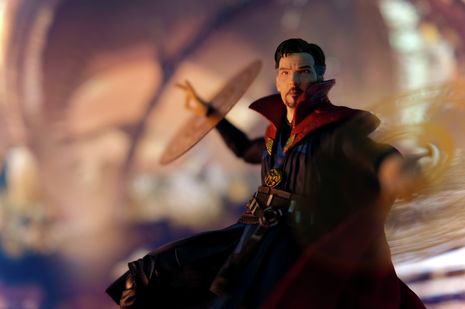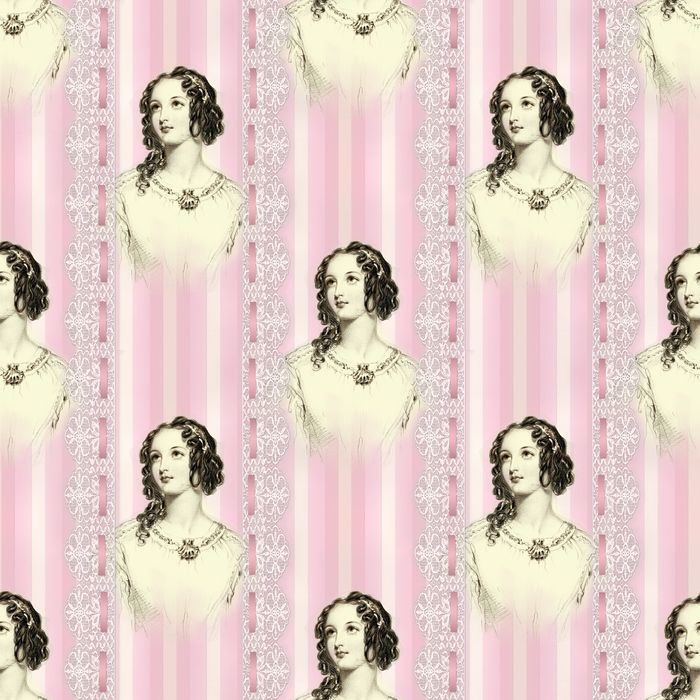Review: Doctor Strange in the Multiverse of Madness
Matthew Hipkin argues that the Sam Raimi magic is lost in the latest entry to the MCU

For most cinemagoers, the gravitational pull of the MCU is a force not easily resisted. To say the prospect of a bizzarro, dimension-hopping mystery tour directed by Sam Raimi piqued my interest would be an understatement of multiversal proportions. With a penchant for the macabre and slapstick in equal measure, Raimi’s signature whip cuts and blurred motion shots seemed a perfect fit for the mind-bending escapades of Doctor Stephen Strange (Benedict Cumberbatch). Wanda Maximoff’s (Elizabeth Olsen) slasher-esque pursuit of the sorcerer, and his multiverse-faring companion America Chavez (Xochitl Gomez). It looked like a screenplay ripped right from the director’s own grisly filmography.
“Doctor Strange in the Multiverse of Madness is disappointing not because of what it is, but because of what it could have been”
And yet, in lieu of the devilishly Raimian gilding I had hoped for, I found myself, like the eponymous Strange, lost in a multiversally baffling exercise of creative damage control. The Raimi magic (to use an appropriate metaphor) has been lost. Though, here and there, the director’s embossments can still be felt, the ghoulish eccentricities of this cult director seem to have been rigorously pulped and sifted; superheated, melted down and poured rather awkwardly into the one-size-fits-all mould of the MCU. Doctor Strange in the Multiverse of Madness is disappointing not because of what it is, but because of what it could have been. If anyone were to break the Marvel mould, it ought to have been Raimi.
“The film seems so hesitant to embrace the visual eccentricities that should accompany a multiversal outing”
There are moments in which the ‘madness’ promised to us thrusts its way to the fore, only to be stunted by some unseen executive hand. It’s as if the film suddenly remembers it’s in the MCU. The sorcerer’s opening battle against an interdimensional octopus is inexplicably bathed in a dull, almost washed out orangey hue; the severing of its tentacles or gouging out of its singular eyeball felt oddly sterile. The delightfully grotesque prospect of a zombified Steven Strange felt sanitised; visually gruesome enough to get a whiff of Raimi’s camp horror vibe, yet palatably marketable enough for the mass audience. We are offered such tantalising glimpses into what could have been, yet the film seems so hesitant to embrace the visual eccentricities that should accompany a multiversal outing. At one point, in an attempt to flee the now deranged Wanda, Strange and Chavez are catapulted across the multiverse, their bodies morphing from cubes to cartoons as they crash through myriad realities in a delectably carnivalesque sequence. Which outlandish funhouse universe might they land in? What CGI Cumberbatch creation might be waiting at the end of their breakneck voyage across the vast multiverse? A foliaged copy of New York, it turns out. Why annex Raimi into the Marvel imperium if your screenplay is so determined to play it safe?
“Visually gruesome enough to get a whiff of Raimi’s camp horror vibe, yet palatably marketable enough for the mass audience”
He admitted himself to Rolling Stone, in what is a rather revealing look behind the Marvel curtain, that the studio’s scheduling arrangements may have hemmed in his original vision. Acknowledging the restrictive filming schedule, Raimi described the somewhat improvisational nature of production: “We’ve got to make the schedule, put it on a crane. I know it can work from there”. Tight schedules are, of course, nothing new. Slightly more concerning to hear, however, was Raimi’s lack of a full script more than halfway through production. The “hardest part” of filming the sequel, Raimi touched on, was an incomplete story: “when you don’t quite know everything about the picture, it’s hard to [direct] as effectively as possible”.
Now, I’m aware the vogue is to knock Marvel for its ostensibly shallow, industrial approach to filmmaking, yet Doctor Strange in the Multiverse of Madness is still one of the most visually distinctive entries in the MCU. It manages to marry elements of cosmic horror with the wisecracking comic formula perfected over the course of 28 films, certainly not an easy feat. Moreover, it entertains with some extremely unexpected cameos. Cumberbatch and Olsen are, as usual, in top form; the latter in particular doing most of the heavy lifting. For all its missed potential, it’s still a fairly top-tier Marvel film — it just could have been a top-tier Raimi film.
 Interviews / You don’t need to peak at Cambridge, says Robin Harding31 December 2025
Interviews / You don’t need to peak at Cambridge, says Robin Harding31 December 2025 News / Downing investigates ‘mysterious’ underground burial vault 29 December 2025
News / Downing investigates ‘mysterious’ underground burial vault 29 December 2025 News / Unions protest handling of redundancies at Epidemiology Unit30 December 2025
News / Unions protest handling of redundancies at Epidemiology Unit30 December 2025 Lifestyle / Ask Auntie Alice29 December 2025
Lifestyle / Ask Auntie Alice29 December 2025 Features / ‘Treated like we’re incompetent’: ents officers on college micromanagement30 December 2025
Features / ‘Treated like we’re incompetent’: ents officers on college micromanagement30 December 2025









